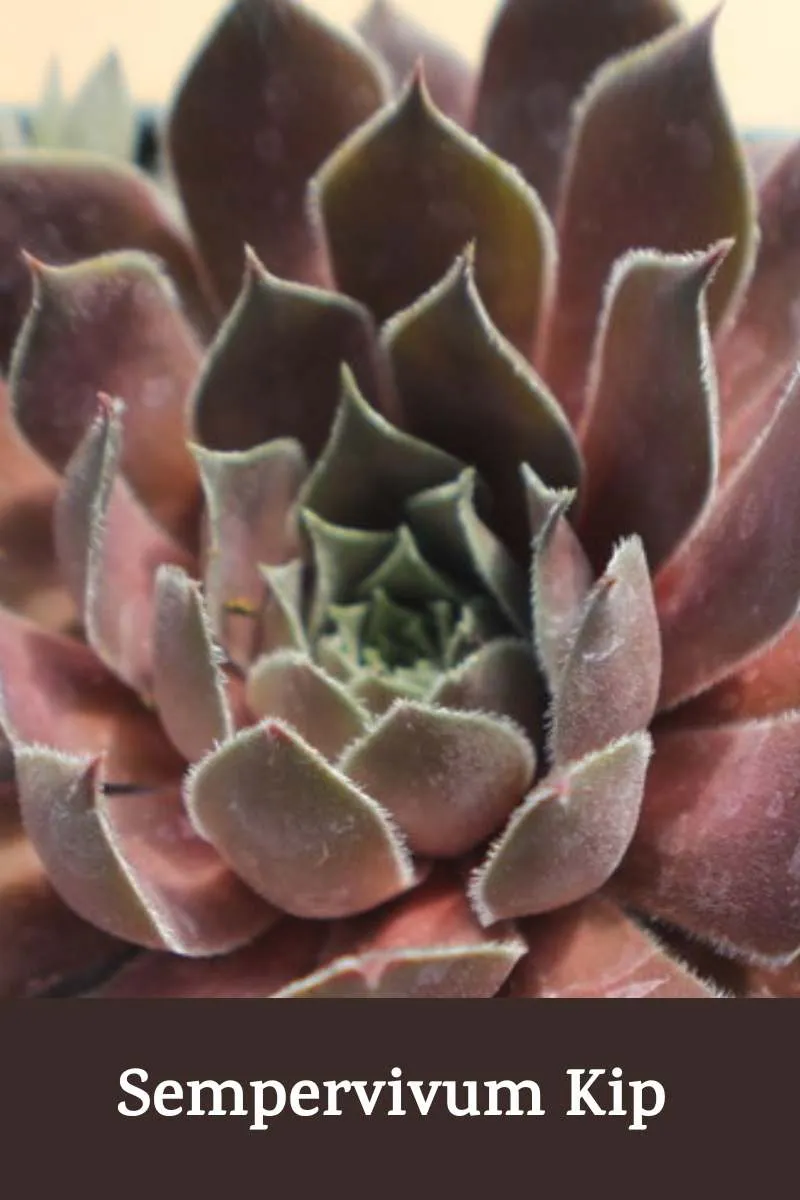
Sempervivum Kip
Sempervivum kip is a member of the Crassulaceae family and is native to Europe. The name Sempervivum means “always alive” or “live forever.” This is an evergreen succulent that forms rosettes of fleshy, green leaves. The leaves are tipped with red, and the flowers are yellow.
This succulent is a low-growing plant that only reaches about 4 inches in height. There are many different ways in which this plant can be used, including rock gardens, containers, or as a groundcover. Growing and taking care of Sempervivum Kip is not difficult at all.
Due to its ability to tolerate poor soil, drought, and full sun, it is a very hardy plant. There is no need to give it much water, and if you give it too much water, it might even cause harm to it. This plant is easy to grow in your garden by propagating offsets and leaf cuttings.
Quick Information:
- This succulent can handle full sun to partial shade.
- Typical water need
- Grow up to 3 in (7.6 cm) tall and 6 in (15 cm) wide.
- It’s cold hardy, and can survive temperatures down to Zone 5a (Minimum -20°F | -28.8°C).
- Propagating by offsets is possible.
- It’s generally non-toxic for both people and pets.
- During winter, it enters a dormant period.
How to Grow and Care for Sempervivum Kip
The plant forms rosettes of fleshy, green leaves arranged in a rosettes shape on its stem. The leaves are often tipped with red or purple, and the plant produces small, yellow flowers in summer. This succulent is an easy plant to grow and care for and makes an excellent addition to any succulent collection.
Soil: If you plan to grow sempervivum kip in your garden, you should choose a location that receives a good mix of full sun and partial shade. Well-drained soil is a perfect environment for this plant, and it does not like to sit in wet conditions. To help improve drainage, mix some sand or grit into the planting container before placing the plant in it.
Water: You will need to water sempervivum kip regularly during the growing season, ensuring that the soil dries out completely between waterings. During the winter, water the plants only once or twice a month, depending on the weather.
Pest and diseases: Sempervivum kip is not susceptible to many pests or diseases, but mealybugs can sometimes be a problem. These pests feed on the sap of the leaves, causing them to turn yellow, and eventually, the leaves will drop to the ground as a result. If you notice mealybugs on your plant, treat them with insecticidal soap or neem oil.
Propagation: Sempervivum kip can be propagated by offsets or by seed. For this, carefully remove the offsets from the parent plant and pot them up in well-draining soil. If you are propagating by seed, sow the seeds on the surface of well-draining soil and keep them moist until they germinate. plants
In addition to being easy to grow and care for, this succulent also makes an attractive addition to the landscape. It can be used as groundcover in rock gardens or planted in containers on patios or decks. They look especially nice when planted with other succulents, such as Sedum and Echeveria.
Sempervivum Kip in the Landscape
Sempervivum kip is a perfect succulent for the landscape. The plant is drought-tolerant and can adapt to soil conditions of varying types. Aside from that, it is also relatively free from pests and diseases. This can be used as a groundcover in rock gardens orcontainers. It has a spreading habit and will form a dense mat of rosettes. The flowers are small and yellow and appear in the summer.
Benefits of Sempervivum Kip
For those who want a low-maintenance, drought-tolerant plant for their landscape and an option that will thrive in dry conditions, then this succulent is an excellent choice. It is a perfect succulent for rock gardens, landscaping, or any other area that tolerates a dry, sunny climate. This plant is also deer resistant and can handle poor soil conditions.
Conclusion
Ultimately, I would like to recommend the Sempervivum kip as a superb succulent plant for both beginner and experienced gardeners. Undoubtedly, this is an attractive plant that will add beauty and interest to any landscape. This is due to its easy care requirements and ability to thrive in a variety of conditions. So what are you waiting for? Consider adding this beauty to your home.

